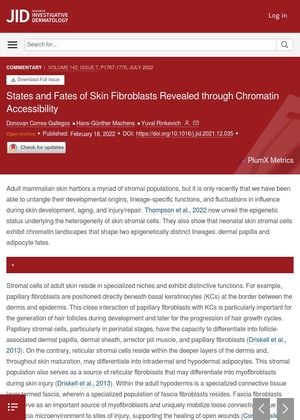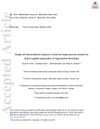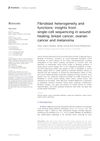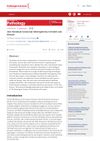States and Fates of Skin Fibroblasts Revealed Through Chromatin Accessibility
February 2022
in “
Journal of Investigative Dermatology
”
skin fibroblasts chromatin accessibility single-cell RNA sequencing single-cell assay for transposase-accessible chromatin sequencing neonatal skin stromal cells dermal papilla adipocyte fates wound myofibroblasts epigenetic status stromal cells regenerative healing scarless healing pathological scarring chronic nonhealing wounds fibroblasts chromatin RNA sequencing ATAC-seq neonatal skin cells fat cells wound healing epigenetics regenerative skin scarless wounds chronic wounds

TLDR Newborn skin cells can change into wound-healing cells more easily than adult ones, which might explain why baby skin heals without scars. Understanding this could help treat chronic wounds and prevent scarring.
The study "States and Fates of Skin Fibroblasts Revealed through Chromatin Accessibility" used single-cell RNA sequencing and single-cell assay for transposase-accessible chromatin sequencing to investigate the heterogeneity and epigenetic status of neonatal skin stromal cells. The results showed that these cells can be divided into two distinct lineages: dermal papilla and adipocyte fates. The study also found that all fibroblast populations can transition into wound myofibroblasts at neonatal stages, unlike in adult stages. This suggests a plastic state in stromal cells during neonatal stages, which could be responsible for the more regenerative and scarless healing observed in neonatal skin wounds. The authors propose that understanding these chromatin configurations could be a powerful approach to treat and prevent pathological scarring and chronic nonhealing wounds.


